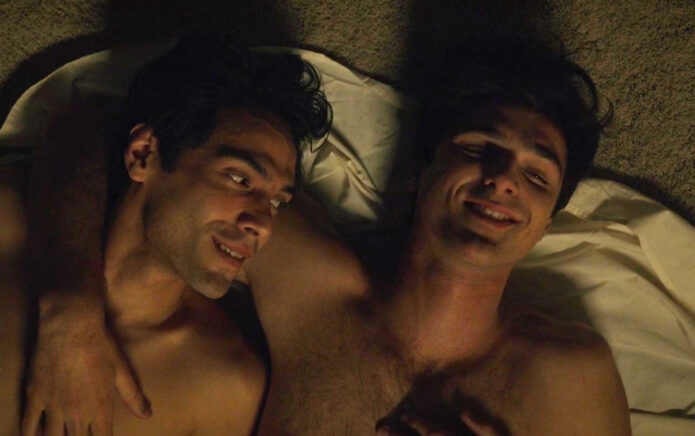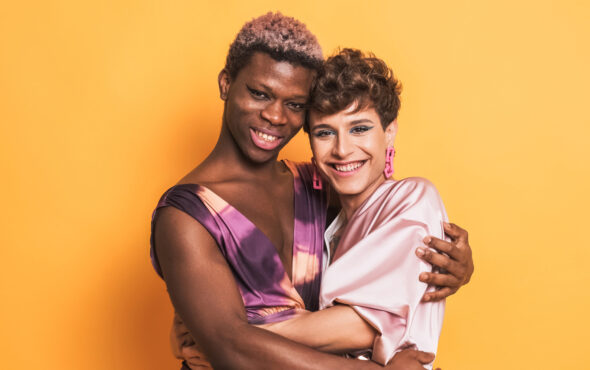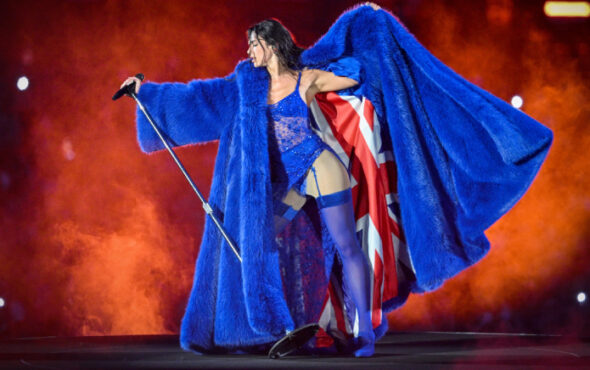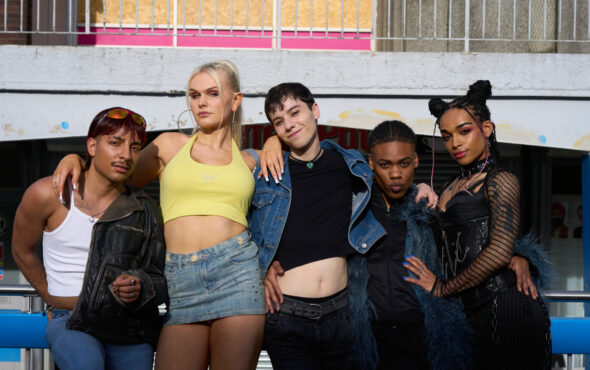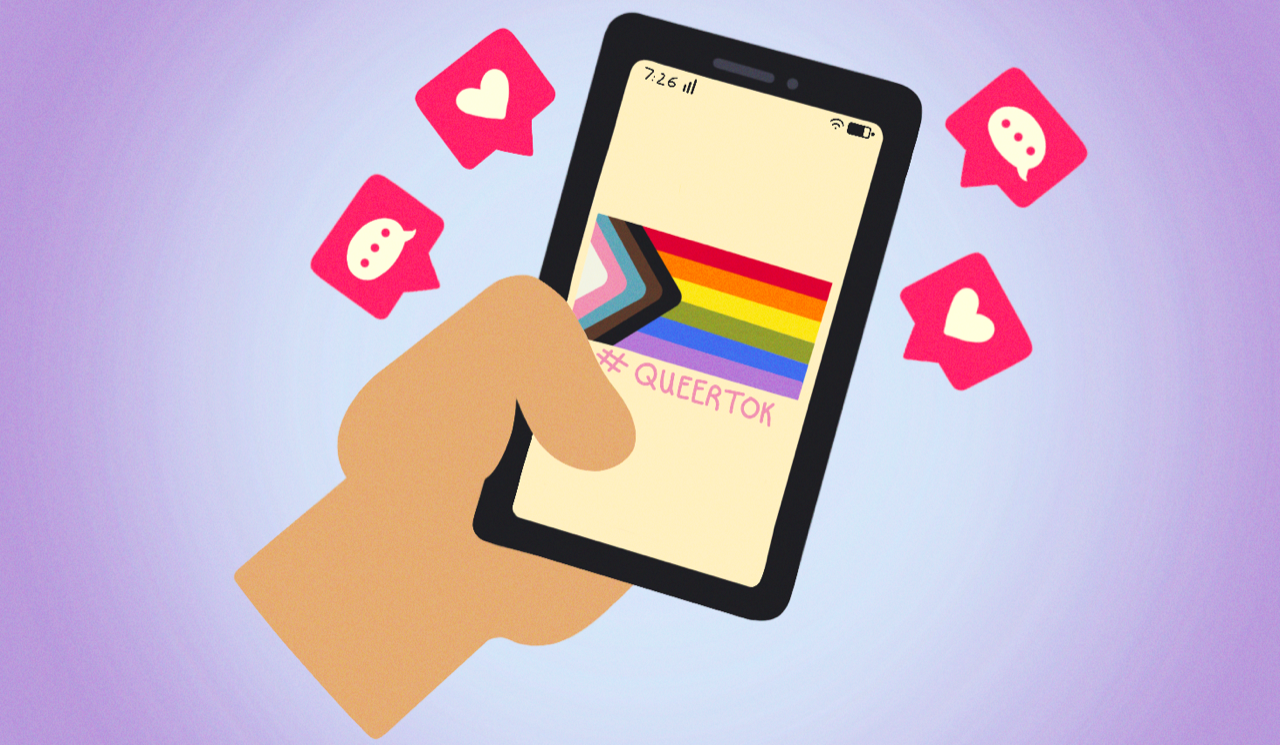
It’s only a few months into 2023 and the internet is collectively mourning the death of our new favourite fictional power couple, Bill and Frank.
The past few years have seen several major studios placing queer storylines front and centre. From theatrical releases like Spoiler Alert to Everything Everywhere All at Once, openly queer characters have had the opportunity to flourish beyond the sparsely written storylines LGBTQ+ people have come to expect. Hollywood’s newly discovered depth in queer storytelling is a refreshing arc that is allowing more and more members of the community to see themselves represented on the big screen.
This paradigm shift in entertainment culture is in part due to pressures from audiences for more representative content. But it’s not just queer folks who want to see more of themselves onscreen, it’s our straight friends who are pushing for more queer storylines too.
Queer media isn’t just for queer people, it has universal appeal
Across the UK, US, and Canada, 9 in 10 queer people actively seek out queer media. While that finding is unlikely to surprise anyone, 6 in 10 heterosexual and cis gendered people also seek it out, according to research released by Unite, the LGBTQ+ community of WPP, late last year. That figure’s even higher in Gen Z audiences at 85%.
Far from being a niche genre, queer media has universal appeal. People are interested in learning not just about people that reflect themselves, but also people who have had different experiences to them. If we never looked outwards, imagine how narrow our understanding of the world would be.
Writer/Director for film, and Director’s Assistant Heartstopper for season one, Sam Arbor says: “I often wonder how tiny my view of the world would be if film and television didn’t exist. I think of all the places film has taken me, the lives and the situations I would never have witnessed if it weren’t for stories on screen. Film is a vital way to understand more of humanity. I especially feel this in the telling of queer stories.
“Shows like Heartstopper are a letterbox to peer through, in which people can understand the lived realities of being a queer person. Understanding (and feeling!) the complexities of our lives will inspire compassion in people, which for me, feels like the first steps towards making change for good in the world.”
From Drag Race offering a window into the world of drag to It’s a Sin taking us back to the devastating impact of the HIV/AIDs pandemic in the 80s, queer narratives are front and centre of some of the highest rating programmes in recent years. It’s not just TV which brings in a non-queer audience though.
“We’ve seen a significant diversification in our audience’s sexual orientation and gender identity at GAY TIMES in recent years,” says Lewis Corner, Editorial Director at GAY TIMES. “But we’ve also experienced a noticeable shift in audience members who are not part of the LGBTQ+ community, who consume our content and follow our channels.”
During a recent GAY TIMES audience survey, the company discovered a growing segment of their audience who don’t identify as LGBTQ+, but engage with their content to educate themselves on queer experiences, as well as appreciate queer culture and entertainment. As one respondent put: “I’m actually not a member of the LBGTQ+ community, but GAY TIMES is a good resource that I often start with to learn more about topics that affect my friends and family members.”
When speaking to queer people about the role of queer media in their lives, WPP Unite found that many focused on how it can normalise and change attitudes around LGBTQ+ lives. When it reaches a broad audience, it can do this on a larger scale and can, in turn, make their lives much easier.
Quotes from BTR respondents:
- “I’m almost 70 years old. I did not have role models or even other people like me in the news or media. I think it’s extremely important for youth to be able to see people of all colours and sexualities to realise they’re not alone.”
- “You can’t be what you can’t see. We deserve content that tells our stories as full human beings.”
WPP Unite’s research suggests that Gen Z are the queerest generation yet, with this demographic being 2.5x more likely to identify as LGBTQ+ than the general population. Gen Z have grown up with access to queer media and have never known a time without it. Is this the reason that more Gen Z identify as queer than any generation before them? With media normalising and celebrating queerness, perhaps it’s no wonder that Gen Z feel more comfortable to openly identify as LGBTQ+.
The internet is an expansive ecosystem of queer subcultures
The explosion of queer content seen in recent decades wouldn’t have been possible without the significant legislative and societal changes over that same period. Nor would it have been possible without the internet. Advancements in online and social networks have created space for queer people to connect with one another, share information, and openly express their identities.
In fact, often it can be easier to do so online than in physical spaces: WPP Unite’s research found that 77% of LGBTQ+ 18-24s are open about their sexuality or gender identity on social media compared with 59% who are open with extended family and 63% with work colleagues. (Note: figures look at % open with some or all of these people).
For better or for worse, the internet has spawned social media and completely transformed the way we connect. It has given us incredibly nuanced communities of shared interests, where an off-hand tweet or a moment in pop culture can be crystalized in queer history through a single GIF. These rich social subcultures permeate mainstream media by the likes of trailblazing influencers and die-hard fans, with social media being the most popular channel to find queer content. It’s no wonder queer influencers are showing up in film and TV. Their devoted fans are drawn to their unique expression, serving as the gatekeepers to audiences many brands are trying to access to establish a relationship with.
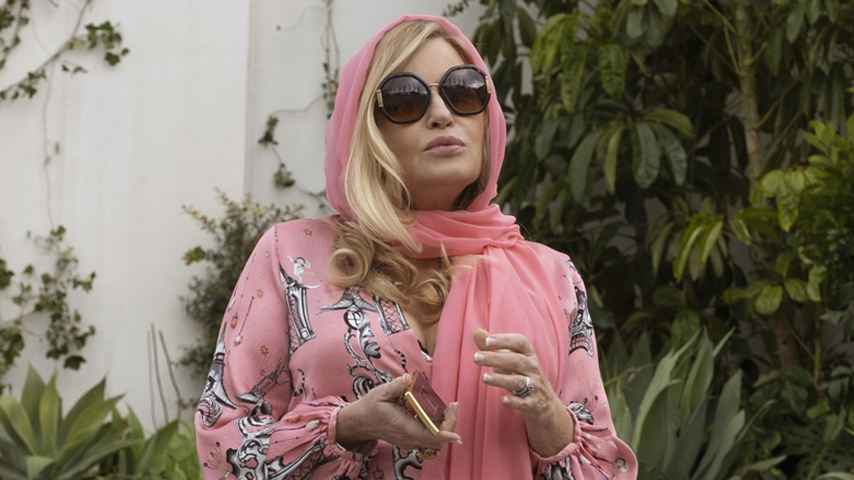
Unlike other media channels, gaming allows the user to take control of the narrative and explore sexuality and gender identity through another world. It has seen huge advancements in queer representation, most recently in The Sims, with the inclusion of trans characters within gameplay that have top surgery scars, binders and shapewear. Despite this meaningful representation, many gamers feel that with every step forward, they’re met with hate and vitriol that sends them two steps back. In fact, GLAAD found that one-in-three LGBTQ+ gamers having reported identity-based harassment online. Are major game developers using these inclusive updates as a PR stunt? Or will they have the tenacity to crack down on hateful actions within their own properties at the risk of losing players and revenue?
It’s often these online spaces that keep queer people connected. Following a steady stream of attacks on queer spaces, including the deadly shooting at Club Q last year, for many, queer havens no longer serve as the safe spaces they once did. Online spaces open up the worlds of queer people, giving them a platform to express themselves and stay close with their queer family.
What’s next?
Organisations responsible for developing queer content are taking stock of its effect on mainstream audiences. Whether it’s influencers booking major brand deals or musicians landing recording deals, brands now know that giving a platform to our community isn’t only important for the progression of society – it’s good for business.
LGBTQ+ people have a global spending power of $3.9 trillion, a 11% increase over the past four years. This is a consumer group that is spending. Brands must first show their support to this community, all year round, not just during key cultural moments. WPP Unite found that just over half (51%) of non-queer and three quarters of queer (75%) people would feel more positively about a brand which supports LGBT+ people year-round.
And, whilst representation is important and having diverse experiences contributes to a rich perspective of the world, queer people, particularly trans people in the UK, are often at the brunt of political culture wars – and brands know it.
Are queer storylines being promoted for the sake of genuine representation or to simply stir the pot? While some certainly have meaningful intent behind their actions, when brands can’t stand up for their own queer positioning, who really bears the brunt in the constant battle for relevancy? M&Ms introduced “inclusive spokescandies” in 2022, only for them to be put on pause in early 2023 in response to aggravated right wing commentators who objected to their new “polarising” identity. Alas, this was all a stunt for a somewhat lacklustre Super Bowl campaign. The whole saga begs the rather cynical question: are brands genuinely trying to support queer audiences or simply feeding the culture wars to generate headlines?
What’s next for queer representation in mainstream media is the inclusion of our community based on our equal existence in humanity, rather than to tick a box or trigger a polarising debate on Twitter. In recent years, we’ve seen significant improvements in queer representation in Hollywood and beyond. Today, queer and non-queer audiences alike have higher expectations than they once did. That means that those who include queer characters as a meaningful representation of real people will likely see more positive results than those who fall back on lazy stereotypes. Everything Everywhere All at Once is a prime example of a movie not billed as inherently queer, but rather a brilliant concept revolving around a mother’s relationship with her queer daughter – may they receive all the flowers they deserve!
When we move beyond surface level articulations of queerness and instead focus on the beautiful complexity and nuance of our community, only then can we give audiences a conclusive demonstration of the human experience.
Devon and Zoe are co-authors of Beyond the Rainbow, WPP Unite’s investigation into LGBTQ+ marketing and its future.
WPP Unite is the LGBTQ+ community living across WPP’s network of 100,000+ people worldwide. We are focused on driving insightful and authentic representation of LGBTQ+ people within media and promoting greater inclusion of LGBTQ+ people within the work and workplaces of the marketing and communications industry. For more information, visit www.wpp.com/unite.
